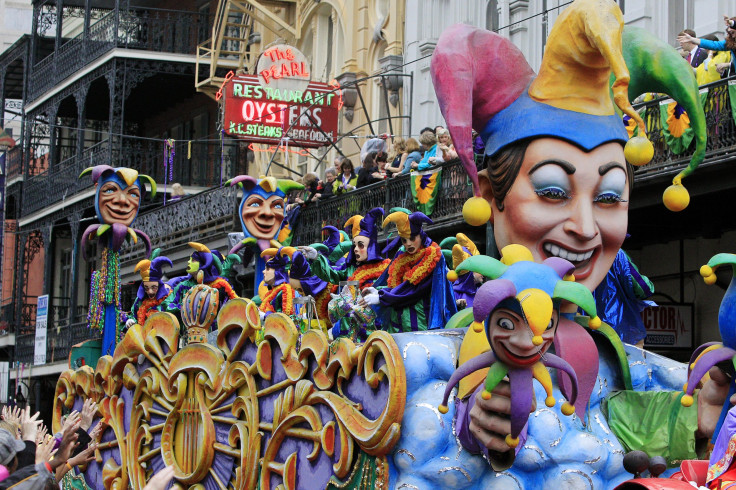Mardi Gras History, Facts, Traditions And What 'Fat Tuesday' Is Really All About

Cities around the world are gearing up for Mardi Gras, a festival marked by street parades, boisterous parties and indulgences of all kinds. While some of the history and traditions have remained true to their origin, the Mardi Gras that many know today is worlds apart from the earliest “Fat Tuesday” celebrations.
The festival associated with flashy costumes and Rex, the “King of the Carnival,” has its roots in pre-medieval Europe at a time when Christianity’s influence was quickly rising. Long before Mardi Gras became about beads, beers and public flashing, it was a Christian holiday that began in 3rd and 4th centuries A.D. and corresponded with pagan spring and fertility festivals, most notably the Roman celebrations of Lupercalia and Saturnalia, according to History. Lupercalia was an ancient festival held in mid-February and was meant as a cleansing against evil spirits. Saturnalia was actually observed in December and honored the Roman god Saturn.

When Christianity became the official religion of the Roman Empire in the 4th century A.D., its leaders decided it was better to integrate local traditions rather than outright prohibit them. The revelries associated with Mardi Gras celebrations became a last hurrah before the Christian holiday of Lent, in which observers refrained from certain earthly pleasures, prayed and repented of their sins for the 40 days before Easter Sunday. As the Romans expanded their territory all over Europe, Christianity and Mardi Gras went with them.
The inherent glut that took place before Lent, which began on a Wednesday, gave rise to the term “Fat Tuesday.” The term Carnival, which comes from the Latin words meaning “farewell to the flesh,” has also been used to describe Mardi Gras celebrations and was traditionally observed in Catholic regions.

Popular Mardi Gras traditions have included mask and costume wearing, a custom whose historical use was to allow merrymakers to escape class constraints. For a few days once a year, Mardi Gras observers could become whomever they wanted under their veils. Masked balls became common in French settlements, including New Orleans. Today, the tradition has survived, and is even compulsory for float riders in New Orleans.
The throwing of beads has a less historical context. The tradition of giving away brightly-colored beads probably began sometime in the late 19th century, however they were made of glass back then and probably would not have survived being tossed. That changed in the 1960s when manufacturers turned to making strings of beads from plastic. The colors represented royalty – green for faith, gold for power and purple for justice.

Another fixture on most Mardi Gras celebrations is Rex, the king of the Carnival. Rex became a part of New Orleans’ Mardi Gras celebration in 1872. Every year, the city chooses a new Rex, someone well-known in New Orleans, to receive the symbolic Key to the City.
The tradition started as a way for New Orleans businessmen to lure tourists and commerce to the city after the American Civil War devastated local economies. The very first Rex was reportedly the Grand Duke Alexis of Russia, who came to the U.S. to take part in a hunting expedition in the Midwest and ended up befriending U.S. Army officer George Armstrong Custer.
© Copyright IBTimes 2024. All rights reserved.












